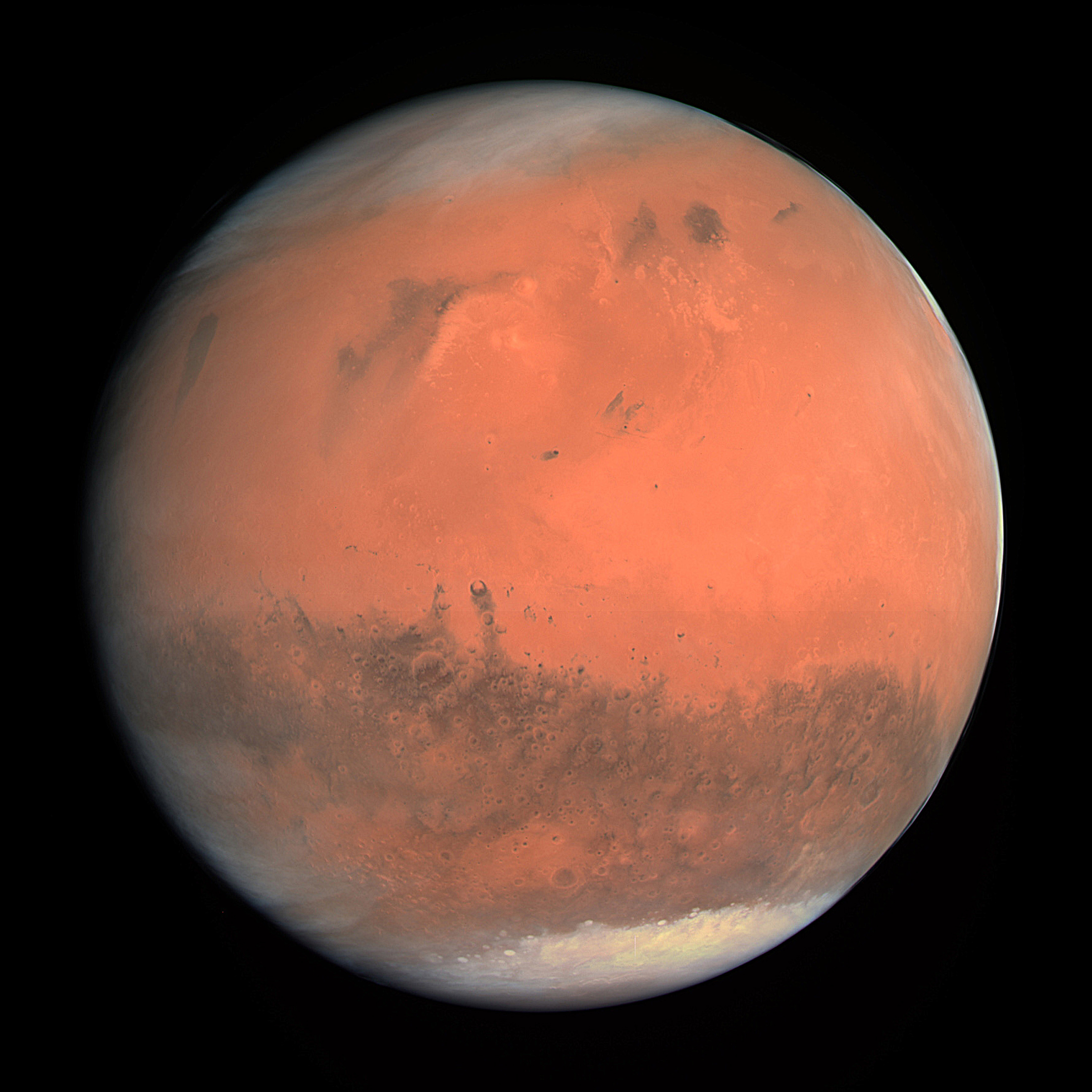Mars once had rings and a much bigger moon, new evidence suggests
Mars' satellites may cycle back and forth between rings and moons.

Mars may have once had a giant ring that eventually got smooshed to form one of its oddly-shaped moons, new research suggests.
Mars has two small, lumpy moons, Phobos and Deimos. Phobos orbits closer to the Red Planet and follows the line of Mars' equator. Deimos orbits farther away, along an orbit that's tilted by 2 degrees off the plane of the Martian equator. The wonky orbit adds evidence to the idea that Phobos may once have been a giant ring that eventually coalesced into its present shape.In 2017, a team of researchers argued in the journal Nature Geoscience that the Martian moons go through cycles — ripped apart into thin rings by the planet's gravity, then eventually forming moons again. In each cycle, the moon formed from the ring is smaller than its former self, with bits of the rings falling out of orbit and drifting out into space. Over billions of years, generations of moons would have gone through these cycles of ring-moon-ring, scientists suspect.
Now, in a new paper published June 1 to the arXiv database,which has not yet been peer-reviewed, an team of researchers (some who were involved in the Nature Geoscience paper) showed that an ancient Martian moon, 20 times the size of Phobos, could have jostled Deimos into its current orbit.
Related: What does it take to be a moon?
"The fact that Deimos' orbit is not exactly in plane with Mars' equator was considered unimportant, and nobody cared to try to explain it," lead author Matija Ćuk, a research scientist at the SETI Institute in Mountain View, California, said in a statement. "But once we had a big new idea and we looked at it with new eyes, Deimos' orbital tilt revealed its big secret."
Two moons that follow similar paths around a planet can end up in a situation called "orbital resonance" where one bobs up and down around the other's orbit. As Live Science has previously reported, two moons of Neptune are currently resonating with each other like this.
Here's what the scientists think happened in this ring-moon cycle to explain the current Mars setup: Deimos formed billions of years ago, and since it has sort of just been overlooking the dynamic ring-moon party. Over that same time, a giant ring encircling Mars got squished into a moon (or moons), dispersed back into a ring and then into a moon again, and so on. During one of these iterations, one of the moons (the giant mystery moon) knocked Deimos into its current ring, and then just like that this mystery moon vanished into its ring form. Then, a remnant of that ring, the scientists suspect, formed Phobos, which is the younger of the two Martian satellites.
Sign up for the Live Science daily newsletter now
Get the world’s most fascinating discoveries delivered straight to your inbox.
In order for this theory to work, the long-lost moon that formed out of a Martian ring would have needed to start moving away from Mars and into a resonance with Deimos that would have produced the more distant moon's current, angled orbit.
Eventually, part of the ring-moon cycle will repeat again. The younger moon Phobos is losing altitude over Mars, and researchers expect that it will eventually break up and form a disintegrating ring around the planet.
That will leave little Deimos orbiting alone, with only its lopsided orbit as a record of what else used to exist around Mars.
- The 9 Biggest Unsolved Mysteries in Physics
- The Large Numbers That Define the Universe
- Twisted Physics: 7 Mind-Blowing Findings
Originally published on Live Science.
OFFER: Save 45% on 'How It Works' 'All About Space' and 'All About History'!
For a limited time, you can take out a digital subscription to any of our best-selling science magazines for just $2.38 per month, or 45% off the standard price for the first three months.











